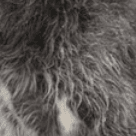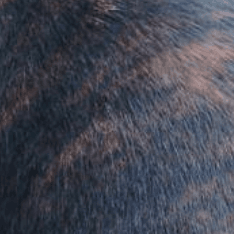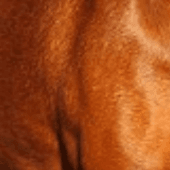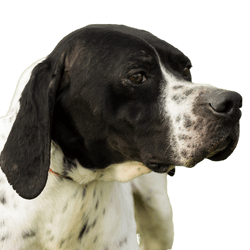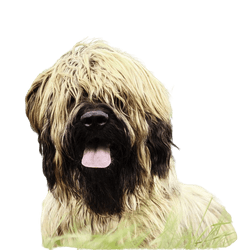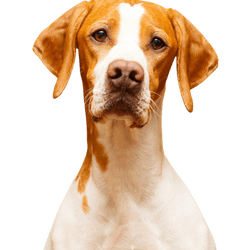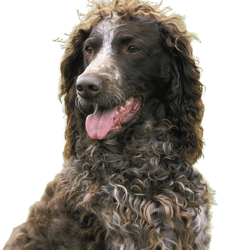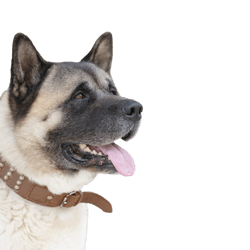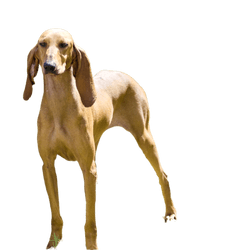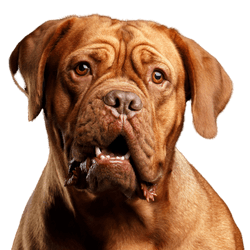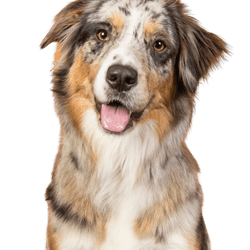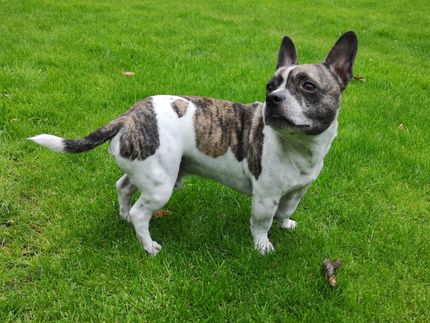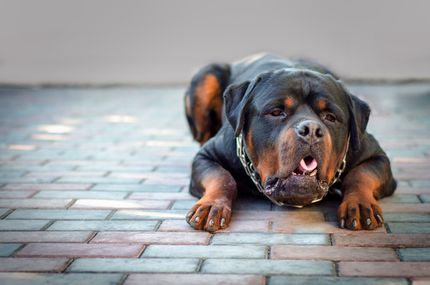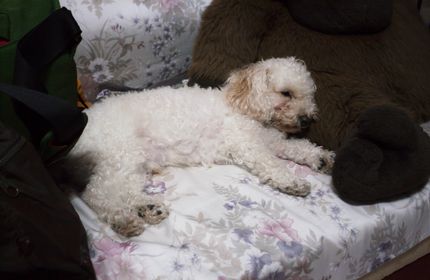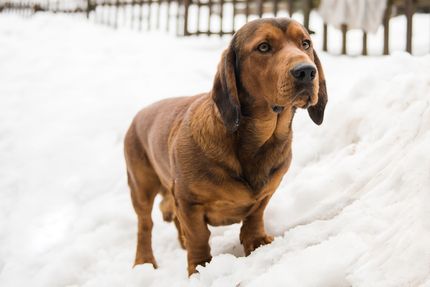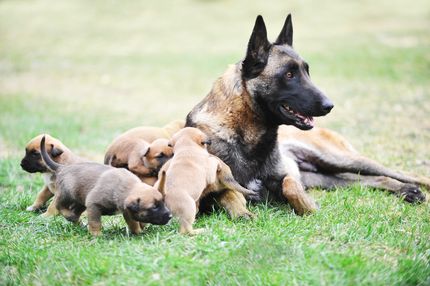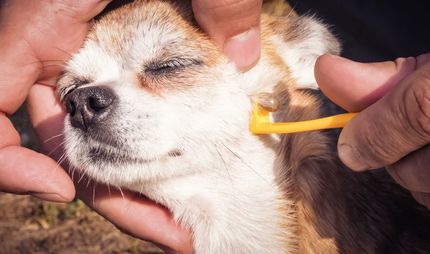Facts & Origin
Italian Moloss and Great Dane are other names for the dog breed Cane Corso. This breed originates in Southern Italy and is intended for dog owners who are already experienced with dogs. Which breed characteristics the Cane Corso is defined by and why this dog is meant for active owners, will be explained to you in more detail below.
Cane Corso - Origin
The Cane Corso is considered a descendant of the herding dog Canis Pugnacis, also known as the Roman Moloss. Cane Corsos are robust and were formerly used as herding and guard dogs. Dogs of this breed were also used as herd-protection dogs. Since the year 1996 the Cane Corso is considered an independent breed and was recognised by the FCI. Nowadays the impressive dog breed, that likes to work with its pack, is used as a tracking and protection dog. Furthermore the dogs are also used in Italy as police dogs and for the hunting of big game. These strong four-legged friends can also be found as guard dogs on farms. The breed is only slowly becoming known outside of Italy.
What are the breed characteristics of the Cane Corso?
If you want to buy a Cane Corso, it is useful to know how big the animal will grow and which characteristics the Italian Moloss is generally known for.
Cane Corso List Dog
In Austria the Cane Corso is not considered a list dog. In Germany it is listed in Brandenburg and Bavaria as a fighting dog in the second category. This means that a character test is necessary as proof to show your animal isn't dangerous. In Switzerland, keeping, breeding, import and acquisition of the Cane Corso is prohibited in one canton. In other cantons, the keeping of this dog is either permitted or a cantonal permit is required.
The Cane Corso is a dog breed that is well-suited for being kept as a protection dog. Your Italian Moloss needs to be trained and socialised well and they need a lot of stimulation. It is advisable to attend a dog school with your dog when it is still young and it is recommendable to only keep this breed of dog if you already have enough experience with dogs. The Cane Corso is not a dog for first-time dog owners.
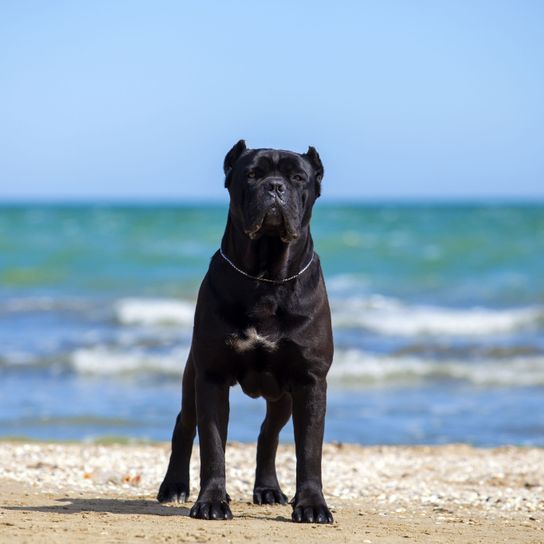
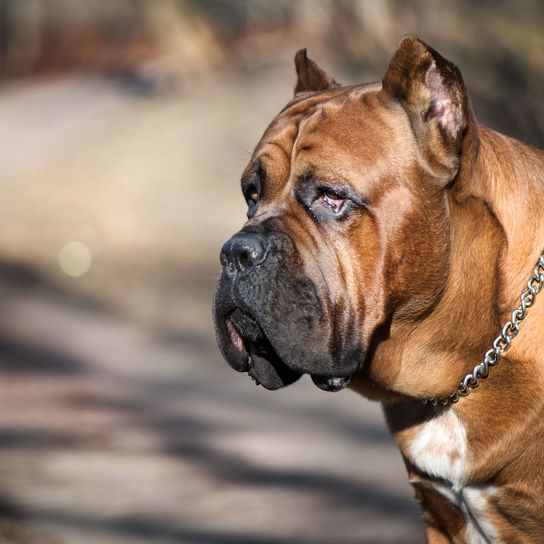
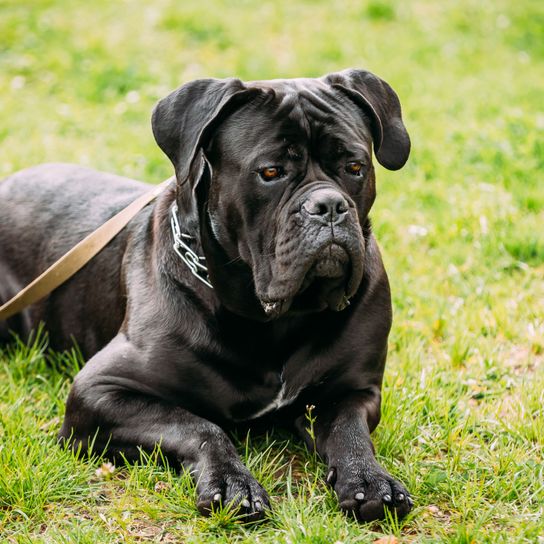
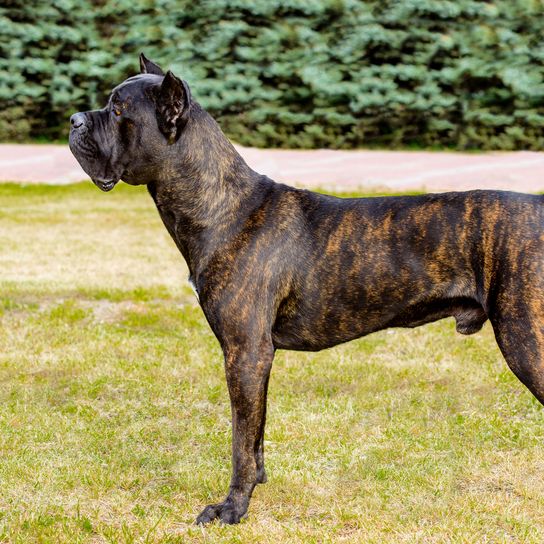
| Alternate Name | Cane Corso Italiano, Italian Corso, Cane di Macellaio, Italian Mastiff |
| Origin | Italy |
| Life expectancy | 10 - 12 years |
| Care requirements | low-maintenance |
| Activity level | average |
| FCI group | Molossian type |
| AKC group | not recognised |
| KC group | Pastoral Group |
Cane Corso mixes
Attitude, character and temperament of the breed
Character of this dog breed
The Italian Moloss needs clear but sensitive guidance and is not intended for first-time dog owners. If you train and care for your Cane Corso well, the animal will show many positive character traits, of which some are listed below:
- loyal
- playful
- docile
- fond of children
However, you must remember that the Cane Corso does not tolerate unknown people or animals, which makes them the ideal guard dog. In case of emergency, the Cane Corso will defend its family. Their protective instinct is strongly developed, which is why this breed of dog needs to be trained consistently.
Training the Cane Corso is essential
The Cane Corso needs good training by someone with a lot of know-how. Due to their enormous protective instinct, this breed is not suited for first-time dog owners. Strict training is essential and the owner should treat the animal responsibly and with consistency. An early socialisation of Cane Corso puppies is absolutely necessary. The dog breed should also be kept occupied. The Cane Corso is very active and can be used as a riding companion dog, medical dog or as a tracking dog. The dog breed is also suitable for obedience training.
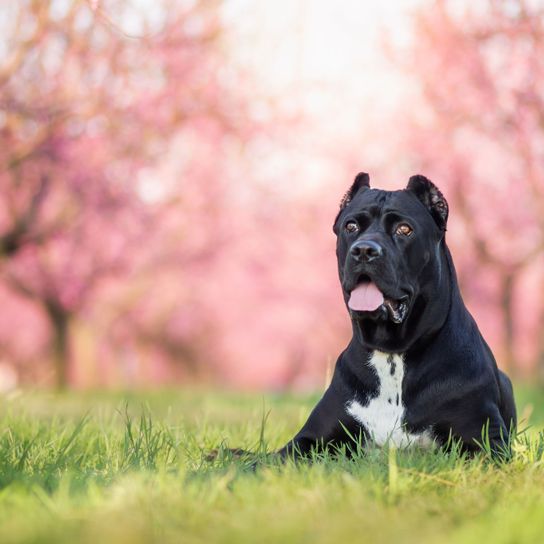
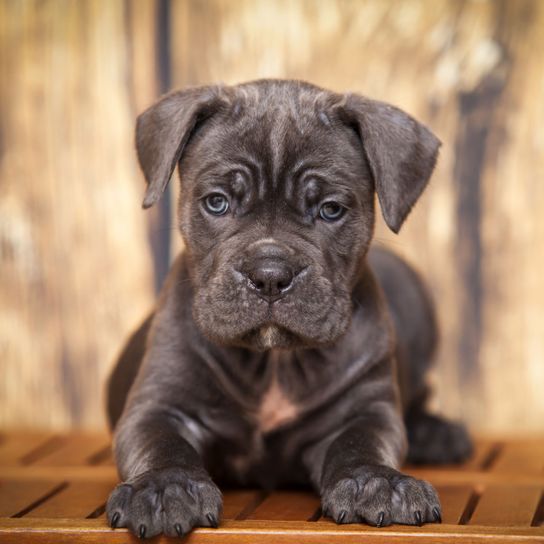
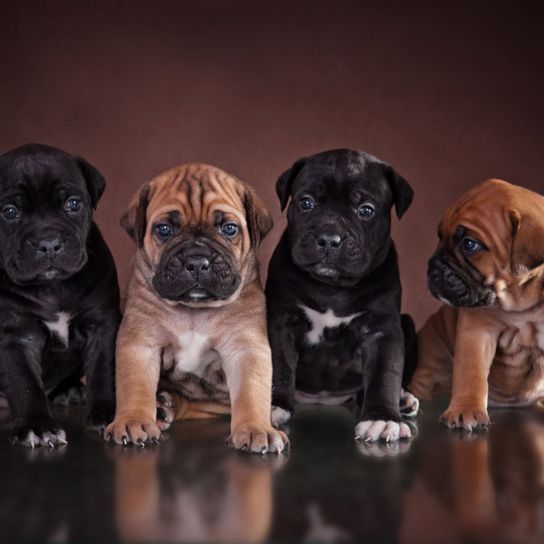
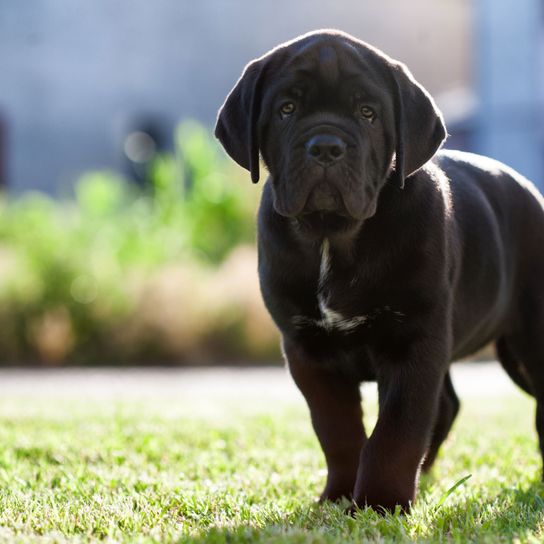
Which diseases are typical for the dog breed?
If you would like to buy a Cane Corso, you should visit a reputable breeder and ask them about disease prevention. The dog breed tends to develop elbow - and hip dysplasia. In a serious Cane Corso breeding the danger of disease is reduced by selection. This also applies to possible heart diseases of this breed. If you notice shortness of breath, increased tiredness or even coughing in your beloved animal, you should visit a vet and have the animal examined for heart disease. The dog breed also has sensitive eyes, so they should not be exposed to air drafts. You should be careful with Cane Corso puppies that have a pure white coat colour. The coat colour is not standard and the puppies may be deaf.
Care and nutrition
The strong dog breed should be accustomed slowly to new food. The new food should first be mixed with small portions of the already known food provided by the breeder. Over several days you can add a little more of the new food. Cane Corso puppies should use special dry food, which is also suitable for puppies of large breeds. Food without optimal protein content leads to skeletal problems in this dog breed. Don't give your Cane Corso cereal-based food, but do make sure it has a high meat content.
The Cane Corso should be freed from loose hairs during the change of coat. Specific knives for trimming dogs can be used for this purpose. Otherwise it is sufficient to brush the animal from time to time. To care for the teeth, dental care snacks from specialist shops can be given to them.
Buy Cane Corso
A Cane Coros puppy costs about 800 and 1200 Euros.

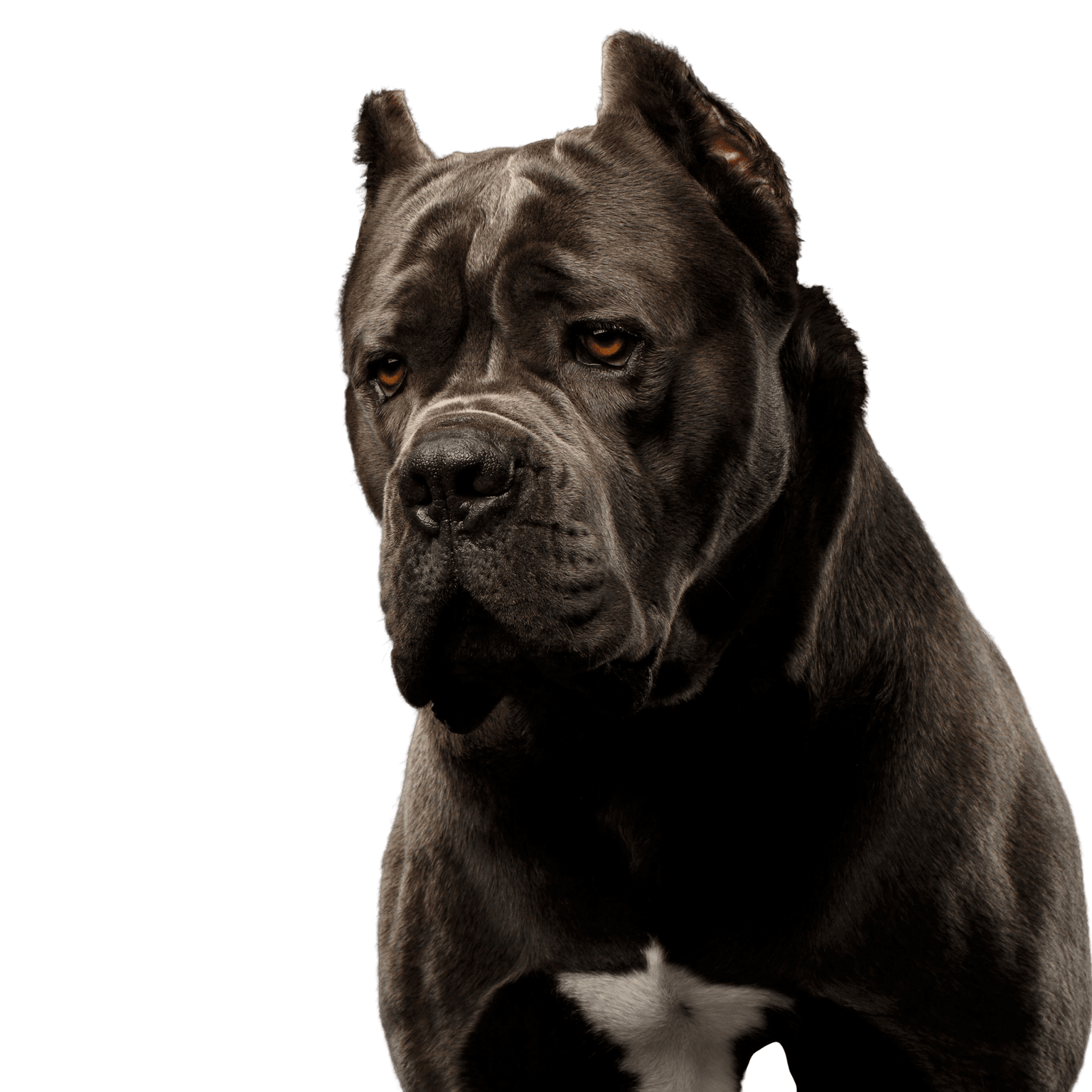
What are the external characteristics of Cane Corso?
The Italian Moloss grows up to be a big and strong dog, which can weigh around 50 kg. Bitches reach a height of 64 cm measured at the withers. Males can reach a withers-height of up to 68 cm. The dog breed has accentuated eyebrow arches and has a prominent frontal furrow. Triangular drooping ears and a broad head define the Italian Moloss. The Cane Corso, which is of strong build, is longer than it is tall. The coat of the breed only has a thin undercoat and is very dense, short and shiny. The following colours are permitted in Cane Corso breeding:
- red
- black
- grey
- fallow
- brindle expressions (all shades)
The Cane Corso is reaches an age of 10 to 12 years on average. The life expectancy also depends on care and nutrition of the animal, of course.
The Cane Corso is one of the dog breeds whose ears and tail have often been docked in the past and this is still happening abroad. In Austria this is forbidden!
| Fur length | short |
| Fur | flat coated |
| Ear shape | Floppy Ear |
| Tail | lang |
| Anatomy | massive, strong, hefty |
| Size ♀ | 58 - 66 cm |
| Weight ♀ | 40 - 45 kg |
| Size ♂ | 62 - 70 cm |
| Weight ♂ | 45 - 50 kg |
| Suitable For | - |
Colors



Known Diseases
Hip dysplasia (HD)
Hip dysplasia (HD) is a genetic condition in dogs where the hip joint is not shaped properly. This leads to pain, stiffness and restricted movement.
Elbow dysplasia (ED)
Elbow joint dysplasia is a chronic disease complex of the elbow joint of fast growing dog breeds.
Eye diseases
Often occur with allergies and intolerances.
Cardiomyopathy
In large breeds of dogs, dilated cardiomyopathy (DCM) is by far the most common cardiomyopathy.
FAQ
-
It has a bite strength of 224PSI, which is very high and is considered a list dog and potentially dangerous breed in some countries. However, a well-behaved Cane Corso has a very calm disposition and can be very fond of children.
-
A Cane Corso is on some country lists and is popularly known as a fighting dog.
-
A Cane Corso needs average exercise. A species-appropriate attitude, however, requires a few hours of activity per day.








